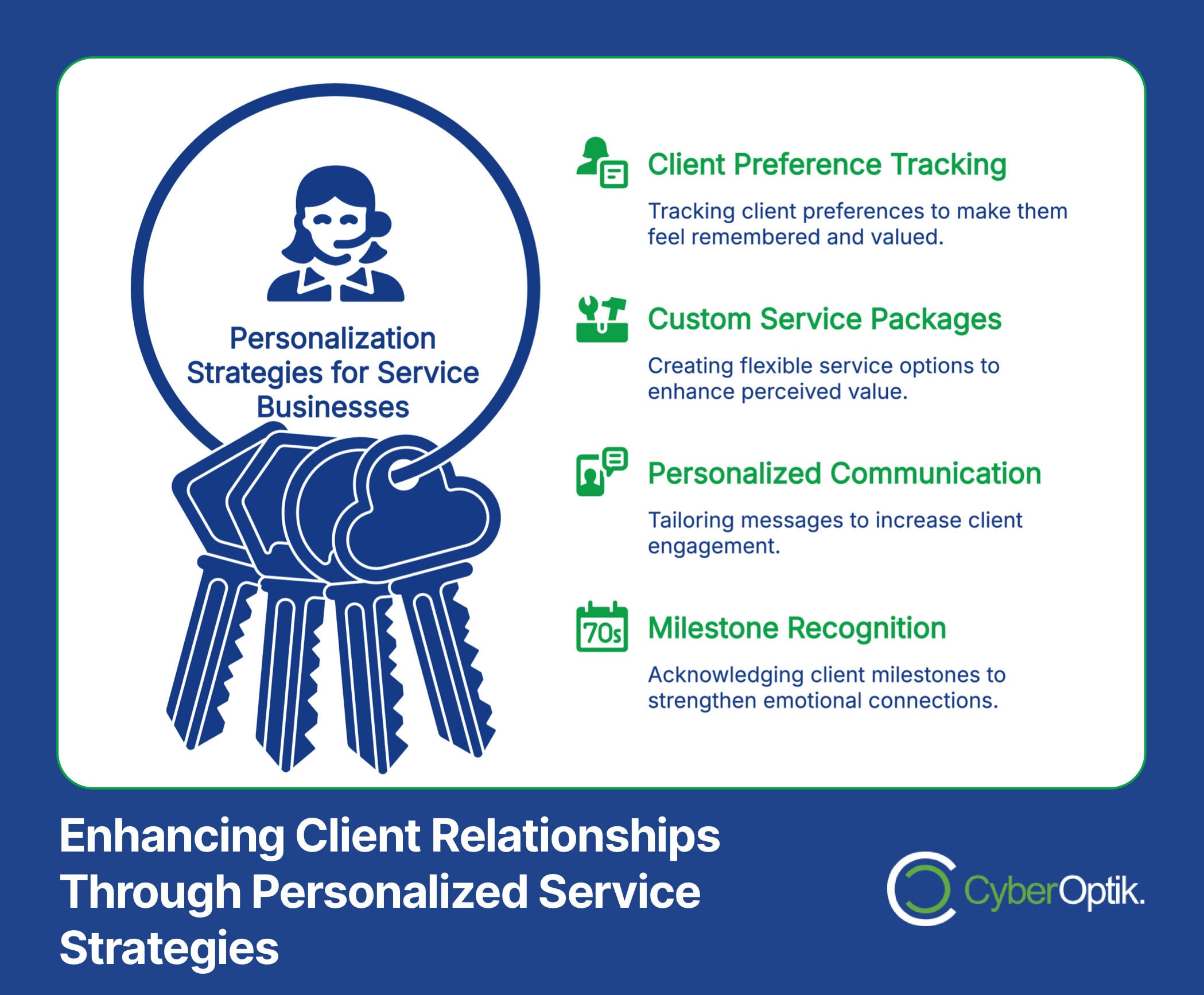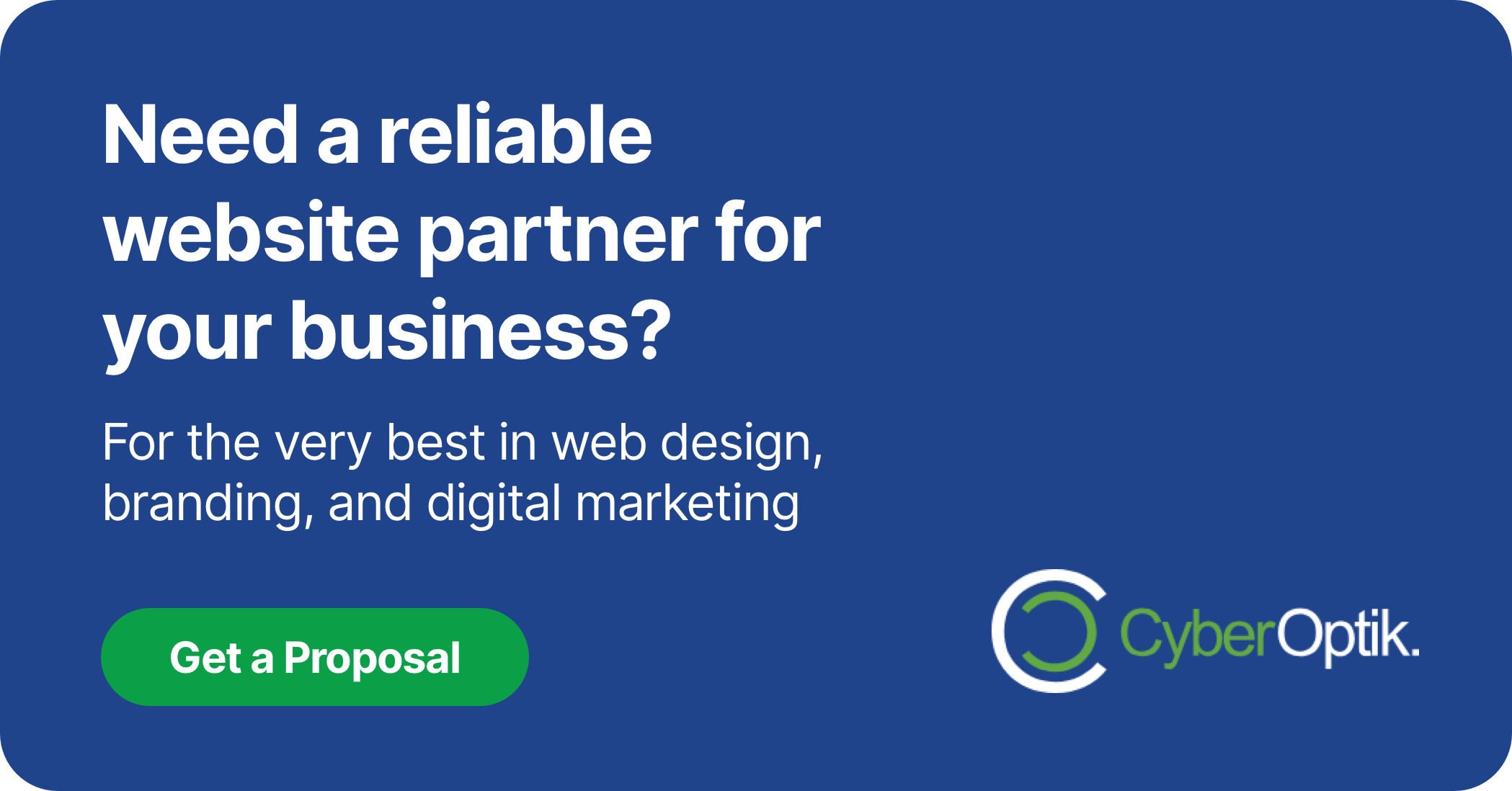Customer loyalty defines the difference between thriving service businesses and those that struggle. When customers repeatedly choose your services over competitors, your business grows more stable and profitable. In today’s competitive market, focusing on repeat business delivers substantially higher returns than constantly chasing new customers.
The economics make this clear. Existing customers spend 67% more than new customers. (Source: BusinessDasher) This spending boost comes with lower service costs and higher conversion rates, creating a powerful profit engine for your business.
We’ve found that service businesses face unique loyalty challenges compared to product-based companies. Service experiences involve direct human interaction, varying delivery quality, and intangible value that customers must trust. These elements require specific loyalty-building approaches.
In this guide, we’ll explore proven customer loyalty techniques for service businesses including:
- Quality-focused service delivery that builds trust and satisfaction
- Personalization strategies that make customers feel valued and understood
- Strategic loyalty programs designed specifically for service businesses
- Technology integration that enhances the customer experience
- Measurement systems that help optimize your loyalty initiatives
Let’s examine how these techniques can transform your service business’s marketing approach and build a loyal customer base that fuels sustainable growth.
Understanding Customer Loyalty in Service Businesses
Customer loyalty works differently for service businesses. Product companies rely on tangible qualities customers can evaluate before purchase. Services require trust. Your clients must believe in your expertise and reliability before seeing results.
This trust-based relationship creates both challenges and opportunities. When clients trust your service business, they become less price-sensitive and more likely to follow your recommendations. They also become valuable ambassadors who refer new business.
The financial impact of loyal customers can’t be overstated. Research shows that increasing customer retention by just 5% can boost profits anywhere from 25% to 95%. (Source: Zinrelo) This dramatic effect occurs because loyal customers cost less to serve, spend more per transaction, and bring in additional business through referrals.
Key Customer Loyalty Statistics for Service Businesses
Understanding the drivers of customer loyalty helps service businesses focus their efforts effectively. The following statistics highlight what influences customers to remain loyal to service providers and how this impacts business outcomes.
| Loyalty Driver | Impact | Statistical Evidence |
|---|---|---|
| Service Quality | Primary driver of initial loyalty | 46% of consumers cite product/service quality as the main reason for loyalty |
| Customer Experience | Determines repeat business | 88% of customers return to businesses where they had positive experiences |
| Personalization | Creates emotional connection | 75% stay loyal to brands that understand their needs |
| Issue Resolution | Opportunity to strengthen loyalty | 80% return if complaints are addressed quickly |
These statistics reveal why service quality forms the foundation of customer loyalty. When service businesses deliver excellence, 46% of customers become loyal based on this quality alone. (Source: PwC) The importance of quality underscores why excellence must be your starting point.
Beyond the initial quality, customer experience determines whether clients return. A remarkable 88% of customers return to businesses where they had positive experiences. (Source: BusinessDasher) This statistic emphasizes that consistency across every touchpoint matters enormously for service businesses.
Essential Customer Loyalty Techniques for Service Businesses
Building customer loyalty requires a strategic approach that addresses multiple touchpoints in your service delivery. The most successful service businesses focus on four essential techniques that work together to create lasting client relationships.
These techniques form a sequence, each building on the previous one. Let’s examine each strategy in detail and explore how to implement it effectively in your service business.
Building Quality Service as Your Foundation
Quality service creates the foundation for all other loyalty initiatives. Without consistently excellent service, other loyalty tactics will fail to retain customers. Quality matters so much that 73% of all purchasing decisions are influenced by the customer experience. (Source: Zendesk)
For service businesses, quality encompasses both technical excellence and the way service is delivered. Even a technically perfect service can fail if delivered with poor communication or attitude. Both elements must work together.
Critical elements that define quality service delivery include:
- Technical expertise – Delivering services that meet or exceed industry standards
- Reliability – Consistency across different staff members and service instances
- Timeliness – Meeting deadlines and respecting client schedules
- Communication – Clear explanations of processes, costs, and outcomes
- Problem-solving – Addressing unexpected issues promptly and effectively
Quality becomes most visible when problems arise. How your business handles service failures often determines whether clients remain loyal. Implementing regular quality checks and gathering detailed feedback helps maintain consistent excellence across all service delivery.
Creating Personalized Customer Experiences

Personalization transforms standard service into memorable experiences that build emotional connections. The impact is significant – 75% of customers remain loyal to brands that demonstrate they understand their specific needs. (Source: Desk365)
For service businesses, personalization means recognizing each client’s unique preferences, history, and requirements. This requires both human attention and technological support to track and utilize customer information effectively.
To create a more personalized service experience, consider implementing these strategies:
| Personalization Strategy | Implementation Approach | Customer Impact |
|---|---|---|
| Client Preference Tracking | Document communication preferences, service history, and personal details | Clients feel remembered and valued |
| Custom Service Packages | Create flexible service options that address specific client needs | Higher perceived value and service relevance |
| Personalized Communication | Tailor messages based on client history and preferences | Increased engagement and response rates |
| Milestone Recognition | Acknowledge client anniversaries, achievements, or significant events | Strengthened emotional connection to your business |
Effective personalization requires the right balance. Too little feels generic and forgettable, while too much can seem intrusive. The goal is recognizing each client’s unique needs while respecting their privacy and preferences.
Implementing Strategic Loyalty Programs
Loyalty programs provide structured incentives for continued patronage. These programs work extraordinarily well – 85% of consumers who join loyalty programs stay with those brands. (Source: Antavo) For service businesses, effective loyalty programs differ from retail approaches.
Service-based loyalty programs should focus on enhancing the service experience rather than simply discounting. The goal is creating additional value that makes customers hesitant to switch providers, even when competitors offer lower prices.
Implementing remarketing strategies allows you to stay connected with customers who have previously engaged with your business, reinforcing your loyalty initiatives through targeted communications.
Several loyalty program types work particularly well for service businesses:
| Program Type | How It Works | Best For |
|---|---|---|
| Tiered Service Levels | Clients earn enhanced service features based on usage history | Professional services with varying service intensities |
| Service Subscriptions | Bundled services at a regular price with added benefits | Businesses with recurring service needs |
| Partnership Programs | Exclusive access to partner services and complementary benefits | Businesses with established networks |
| Referral Rewards | Benefits for clients who refer new customers | Services with high client satisfaction |
The most effective loyalty programs for service businesses make customers feel like valued partners rather than simply transactions. This partnership mentality encourages 64% of loyalty program members to spend more to maximize their rewards. (Source: Antavo) Well-designed programs create mutual benefit that strengthens business relationships.
Resolving Customer Issues Efficiently

Even the best service businesses encounter problems. The difference between losing and keeping customers often depends on how effectively you resolve these issues. When complaints are addressed quickly and satisfactorily, 80% of customers will return to do business with you again. (Source: HelpScout)
Service recovery presents an opportunity to actually strengthen loyalty. Customers who experience a problem that gets resolved well often become more loyal than those who never had issues. This “service recovery paradox” happens because problem resolution demonstrates your commitment to customer satisfaction.
Best practices for effective customer issue resolution include:
- Rapid response – Acknowledging issues immediately, even before solutions are available
- Ownership – Taking responsibility rather than deflecting blame
- Empathy – Demonstrating genuine understanding of the customer’s frustration
- Clear communication – Explaining what happened and how it will be fixed
- Follow-through – Ensuring the solution works and checking customer satisfaction
Understanding how to encourage and manage customer reviews is critical for building trust with potential clients, especially after resolving service issues. Positive reviews from previously dissatisfied customers can be particularly powerful testimonials.
The contrast between good and poor service recovery is stark. While 80% return after good issue resolution, 61% abandon brands completely after poor service experiences. (Source: Zendesk) This dramatic difference highlights why effective problem resolution must be a priority for service businesses.
Technology-Driven Loyalty Strategies for Service Businesses
Modern technology offers powerful tools for enhancing customer loyalty. The right technology solutions help service businesses deliver more consistent experiences, gather better insights, and create more meaningful customer interactions at scale.
Technology supports loyalty-building in three key areas: customer data management, service delivery automation, and enhanced communication. Let’s explore how service businesses can leverage these technologies effectively.
Leveraging CRM Systems for Better Customer Insights
Customer Relationship Management (CRM) systems form the technological backbone of effective loyalty strategies. These platforms centralize customer data, track interactions, and provide insights that enable personalized service delivery.
Modern CRM systems do more than store contact information. They create comprehensive customer profiles that include service history, preferences, communication records, and even behavioral patterns. This unified view enables service businesses to understand each customer’s unique relationship with their company.
When properly implemented, CRM systems deliver several key loyalty benefits:
| CRM Capability | Loyalty Benefit | Implementation Consideration |
|---|---|---|
| Interaction Tracking | Continuous service experience across multiple team members | Requires consistent data entry protocols |
| Service History | Personalized recommendations based on past preferences | Needs detailed service documentation |
| Communication Logs | Contextual understanding of client needs and concerns | Must integrate with email and communication platforms |
| Automated Reminders | Proactive service scheduling and follow-up | Requires workflow customization |
The process of building a consistent brand experience directly contributes to customer loyalty and recognition, and your CRM system plays a vital role in maintaining this consistency across all customer touchpoints.
For service businesses, the most valuable CRM features focus on relationship building rather than just sales tracking. Look for systems that help maintain continuous client relationships through service intervals, not just during active service periods.
Using AI and Automation to Enhance Customer Experience
Artificial intelligence and automation technologies are transforming how service businesses deliver consistent, personalized experiences. These technologies allow even small service providers to offer sophisticated loyalty-building interactions that were previously only available to large enterprises.
The impact of AI on customer loyalty is substantial. Studies show that 73% of customers remain loyal to companies that use AI effectively to enhance their experience. (Source: Loyalty360) This loyalty stems from the combination of efficiency and personalization that well-implemented AI provides.
Enhance Your Online Presence
Discover how effective Google Business Profile management can significantly improve your local visibility and customer trust.
Service businesses can implement several AI-powered tools to enhance loyalty:
- Predictive service scheduling – Using past service patterns to recommend maintenance timing
- Personalized communication automation – Sending contextual messages based on service history
- Intelligent service routing – Matching clients with the most appropriate service providers
- Sentiment analysis – Identifying potential satisfaction issues before they escalate
When implementing AI and automation, focus first on enhancing human capabilities rather than replacing them. The most effective loyalty-building technologies amplify your team’s ability to deliver exceptional service rather than creating impersonal experiences.
Social Media as a Loyalty-Building Platform
Social media platforms have evolved from marketing channels into powerful loyalty-building tools for service businesses. These platforms enable ongoing engagement with clients between service interactions, creating continuous relationship touchpoints.
With social media becoming a primary channel for customer engagement, service businesses need a strategic approach to these platforms. The key is using social channels for relationship building rather than just promotion.
Effective social media loyalty strategies include:
| Strategy | Implementation Approach | Loyalty Impact |
|---|---|---|
| Community Building | Creating spaces for clients to connect around shared interests | Strengthens brand affiliation and peer connections |
| Educational Content | Sharing valuable information related to your service area | Positions your business as a trusted resource |
| Client Recognition | Highlighting client successes and milestones | Creates positive emotional connections |
| Exclusive Content | Providing special information or offers to followers | Rewards engagement and creates FOMO |
The most successful service businesses maintain consistent social media presence that aligns with their overall service personality. This consistency helps reinforce brand identity and strengthen the emotional connection clients feel with your business between service interactions.
Measuring the Success of Your Customer Loyalty Initiatives
Effective loyalty programs require ongoing measurement and optimization. Service businesses need clear metrics to evaluate whether their loyalty initiatives are working and identify opportunities for improvement.
Unlike retail businesses that can track transactions easily, service businesses often have longer intervals between customer interactions. This requires more sophisticated approaches to loyalty measurement that account for relationship quality as well as transaction frequency.
Key Performance Indicators for Customer Loyalty
Service businesses should monitor several specific metrics to gauge loyalty effectiveness. These KPIs provide a comprehensive view of how well your loyalty initiatives are performing across different dimensions of the customer relationship.
The most valuable loyalty metrics for service businesses include:
| Loyalty Metric | What It Measures | How to Calculate | Target Benchmark |
|---|---|---|---|
| Customer Retention Rate | Percentage of customers who remain active | ((End Customers - New Customers) ÷ Start Customers) × 100 | 70-80% annual for most services |
| Net Promoter Score (NPS) | Likelihood customers will recommend you | % Promoters - % Detractors | 50+ indicates strong loyalty |
| Customer Effort Score | How easy you are to do business with | Survey rating of service interaction ease | Below 3 on 7-point scale (lower is better) |
| Repeat Purchase Rate | Frequency of repeat service usage | Repeat Purchases ÷ Total Customers | Varies by service type |
Tracking these metrics over time reveals trends in customer loyalty and helps identify specific areas for improvement. The most valuable insights often come from comparing metrics across different customer segments, service types, or team members.
Calculating Customer Lifetime Value (CLV)
Customer Lifetime Value (CLV) represents the total revenue a business can reasonably expect from a single customer throughout their relationship. This metric is particularly important for service businesses where the true value of loyalty manifests over extended periods.
Calculating CLV helps service businesses make informed decisions about loyalty program investments, customer acquisition spending, and personalized service offerings. When you know a customer’s potential lifetime value, you can determine appropriate investment in retention.
A basic formula for calculating CLV in service businesses:
CLV = Average Service Value × Service Frequency × Average Customer Lifespan
More sophisticated CLV calculations incorporate factors like:
- Referral value – Revenue from new customers referred by existing ones
- Upselling potential – Increased revenue from additional services
- Cost efficiencies – Lower service costs for long-term customers
- Price sensitivity – Loyal customers’ willingness to accept price increases
The CLV calculation provides context for your loyalty investments. When you recognize that existing customers spend 67% more than new customers, the return on loyalty initiatives becomes more apparent. (Source: BusinessDasher) Understanding CLV helps justify the resources needed for effective loyalty programs.
Adjusting Strategies Based on Customer Feedback
Quantitative metrics tell only part of the loyalty story. Qualitative customer feedback provides essential context that helps service businesses understand the “why” behind loyalty behaviors and make meaningful improvements to their approaches.
Effective feedback collection combines structured surveys with open-ended opportunities for customers to share their experiences. The goal is gathering actionable insights rather than just satisfaction scores.
To maximize the value of customer feedback for loyalty improvement:
- Ask targeted questions about specific loyalty drivers relevant to your business
- Time feedback requests appropriately during the customer journey
- Close the feedback loop by acknowledging comments and explaining how you’ll address concerns
- Share insights across the organization to improve service delivery
Customer feedback is particularly valuable when launching new loyalty initiatives. Early feedback helps refine programs before full implementation, ensuring they deliver genuine value to customers rather than just meeting internal business goals.
Implementing Loyalty Marketing in Your Service Business
Developing a comprehensive loyalty marketing strategy requires systematic implementation across multiple business functions. Service businesses need to address organizational culture, staff training, and long-term strategic planning to create effective loyalty initiatives.
The most successful loyalty implementations follow a phased approach that builds momentum gradually rather than attempting to transform everything at once. This methodical process helps ensure each loyalty component receives proper attention and resources.
Creating a Customer-Centric Culture
Customer loyalty begins with organizational culture. When your entire team prioritizes customer relationships and long-term value over short-term transactions, loyalty naturally improves. This cultural foundation supports all other loyalty initiatives.
The impact of company culture on loyalty is significant. Research shows that 73% of customer loyalty can be attributed to friendly employees and good service. (Source: Emarsys) This statistic highlights why cultural alignment must precede tactical loyalty programs.
Steps to develop a customer-centric culture include:
- Define clear values that prioritize customer relationships
- Recognize and reward employees who exemplify these values
- Share customer success stories throughout the organization
- Involve team members in developing loyalty initiatives
- Measure cultural indicators alongside business metrics
Culture change requires leadership commitment. When executives consistently demonstrate customer-centric values through their decisions and behaviors, these priorities cascade throughout the organization and become embedded in daily operations.
Training Your Team for Loyalty-Building Interactions
Even with the right culture, employees need specific skills to build customer loyalty effectively. Training programs should focus on both technical service delivery and the interpersonal skills that create positive emotional connections with customers.
Effective loyalty training covers several critical areas:
| Training Component | Key Skills Developed | Implementation Approach |
|---|---|---|
| Active Listening | Understanding customer needs beyond what's directly stated | Role-playing exercises with feedback |
| Service Recovery | Turning problems into loyalty-building opportunities | Case studies and scenario training |
| Personalization Techniques | Adapting service delivery to individual preferences | Customer profile analysis practice |
| Emotional Intelligence | Recognizing and responding to customer emotions | Behavioral modeling and coaching |
Training should be continuous rather than a one-time event. Regular reinforcement through team discussions, performance coaching, and refresher sessions helps embed loyalty-building behaviors into everyday service delivery.
Long-term Loyalty Strategy Development
Sustainable customer loyalty requires a long-term strategic approach rather than isolated tactical programs. A comprehensive loyalty strategy integrates all customer touchpoints into a cohesive experience that consistently builds relationship value.
The importance of strategic planning is evident in how businesses are approaching loyalty. Currently, 90% of companies plan to revise their loyalty strategies within the next three years. (Source: Antavo) This widespread focus on strategic loyalty development reflects its critical importance for business success.
A comprehensive loyalty strategy implementation typically follows this timeline:
| Timeline Phase | Key Activities | Success Indicators |
|---|---|---|
| Months 1-3: Foundation | Data assessment, customer research, goal setting | Clear metrics established, baseline measurements |
| Months 4-6: Program Design | Loyalty program structure, technology selection | Program documentation, implementation roadmap |
| Months 7-9: Initial Implementation | Staff training, pilot program launch | Initial adoption rates, feedback collection |
| Months 10-12: Refinement | Program adjustments, full-scale rollout | Improved loyalty metrics, process efficiency |
| Year 2: Optimization | Advanced personalization, deeper integration | Increased CLV, higher retention rates |
Effective loyalty strategies balance short-term engagement tactics with long-term relationship building. While promotional offers might drive immediate activity, the sustainable value comes from creating emotional connections and service experiences that competitors cannot easily replicate.
Conclusion: Building Lasting Customer Loyalty in Your Service Business
Customer loyalty represents one of the most valuable assets for service businesses. The strategies we’ve explored create a framework for developing deeper customer relationships that drive sustainable growth and profitability.
The economics make a compelling case for loyalty focus. When acquisition costs have increased by 60% in just five years, retention becomes even more crucial for profitability. (Source: Emarsys) This cost escalation makes customer loyalty not just beneficial but essential for service business success.
As you implement these loyalty techniques, remember that customer expectations continue evolving. Today, 76% of customers expect personalized interactions based on their previous engagements with your business. (Source: Zendesk) Meeting these rising expectations requires ongoing adaptation and refinement of your loyalty strategies.
We’ve seen that successful loyalty marketing for service businesses requires a comprehensive approach including:
- Unwavering commitment to service quality excellence
- Personalization that demonstrates understanding of individual needs
- Strategic loyalty programs tailored to service business models
- Effective technology implementation that enhances the customer experience
- Measurement systems that provide actionable insights
- Organizational culture that prioritizes long-term relationships
The most successful implementations blend these elements into a coherent experience that makes customers feel valued and understood throughout their journey with your business.
Ready to enhance your service business’s customer loyalty strategy? We help service businesses develop effective digital marketing approaches that support customer retention and growth. Contact our team to discuss how we can help strengthen your customer relationships through strategic web design and digital marketing solutions.




